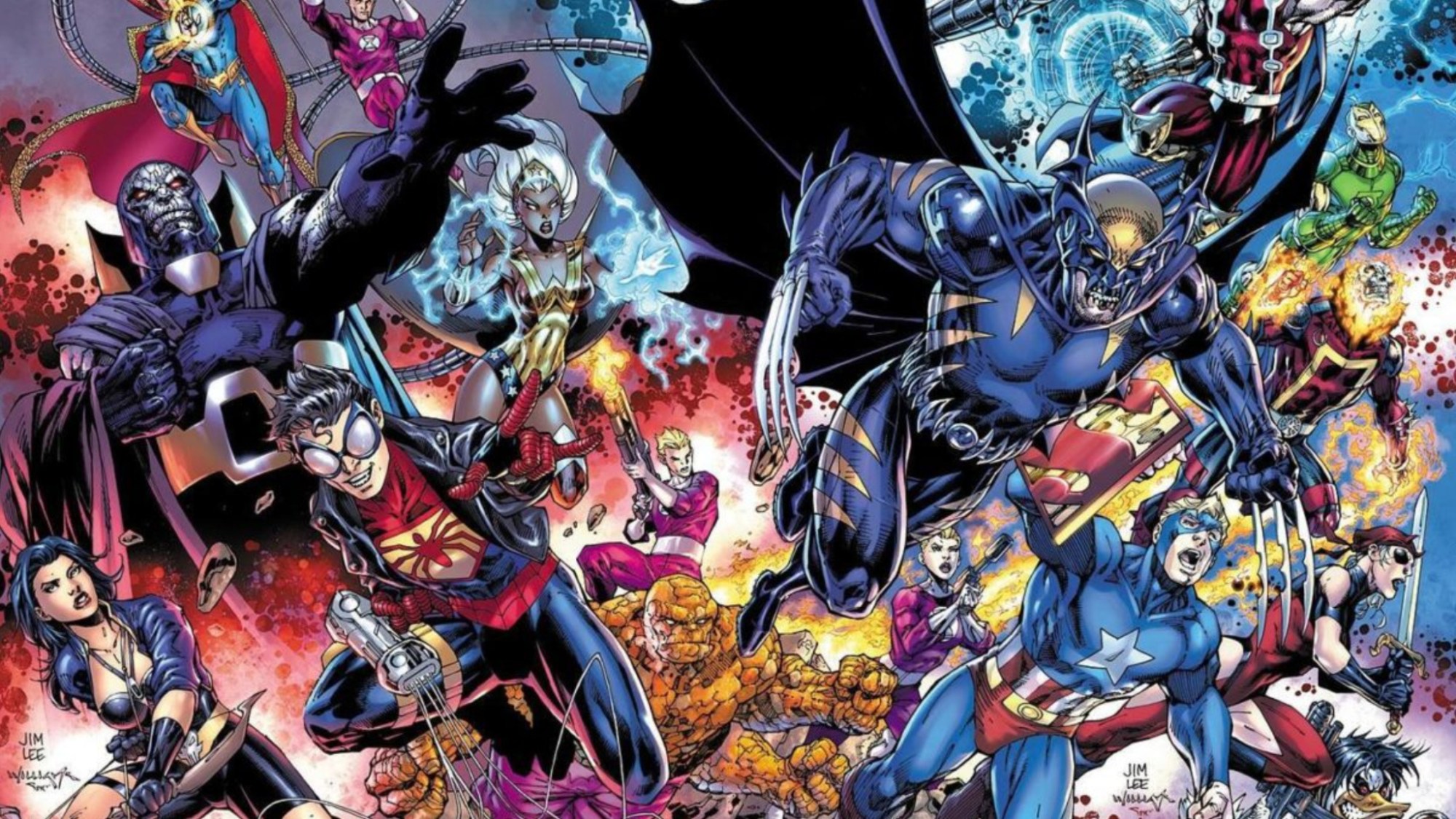After more than two decades since DC’s Wonder Woman and Batman last shared the page with Marvel’s Thor and Iron Man, fans of both publishers, who have contributed more than anyone else to the development of the superhero comic genre, were thrilled earlier this year by the announcement of a new DC-Marvel crossover. While details of the event are emerging, the rich history of collaborations between these two comic book titans promises a legendary tale that will undoubtedly leave a lasting impact on both universes. With the collaboration set to drop sometime this year, there’s no better time than the present to revisit past DC–Marvel crossovers, which were once a frequent occurrence, to understand the potential impact of the upcoming event on both universes.
A great place to start a review is with the Amalgam Comics series — arguably the most creatively ingenious fusion of DC and Marvel characters in the history of their collaborations. It’s a concept that undoubtedly deserves a second chance to showcase how exceptional these two superhero universes can be when combined with imagination and flair.
The Amalgam Comics series was unprecedented, not only as a crossover event, but also in the way it was organized. It was an extreme crossover event that happened in the midst of a broader, more standard DC-Marvel collaboration. Specifically, in 1996, DC and Marvel collectively published a crossover mini-series entitled DC vs. Marvel(for DC fans) and Marvel vs. DC (for Marvel fans), which pitted the heroes of the two universes against each other, with the loser having their universe erased from existence. Naturally, the series featured some of the strongest and most popular characters facing off against one another. Needless to say, the series was an exciting bit of fan service, exploring stories that fans had been debating amongst themselves for decades and giving them a voice in the outcomes of specific battles.
However, in a major twist to the crossover genre, DC and Marvel introduced a “sub-crossover” event between the third and fourth issues of the main series, collectively known as the Amalgam Comics series. In this unique storyline, several superheroes involved in the larger contest were literally merged together to create entirely new characters. For example, Batman and Wolverine were combined to form Dark Claw, Darkseid and Thanos became Thanoseid, and Spider-Man and Superboy fused into Spider-Boy.
There were a total of twelve character combinations, each given a one-shot comic book to explore their stories in depth. However, in DC vs. Marvel #4, the merged heroes and villains were separated back into their original individual forms. In 1997, Amalgam Comics returned with a new 12-issue series that further examined the possibilities of combining DC and Marvel heroes. Like the first iteration, the 1997 series offered an exciting glimpse into the compelling superhero storytelling that emerges when DC and Marvel bring together their collective experiences and expertise.
With DC and Marvel already in agreement to bring forth another inter-universe event, the Amalgam Comics universe model would be ideal. It’s the perfect tweak to the traditional crossover model for a superhero comic book fandom that’s grown accustomed to the multiverse concept. More than just a crossover, it’s a fusion of styles, concepts, and characters that brings a genuinely fresh take on long-held ideas. This approach gives creators maximum creative freedom to come up with intriguing hero-villain combinations that resonate with both DC and Marvel’s contemporary fan bases.
Moreover, is there a better way to revitalize a title or character than by injecting a fresh take on an old vibe? Take Amalgam Comics’ hero Super-Soldier, a fusion of Superman and Captain America. He perfectly combined their “goody two-shoes,” patriotic hero personas. Fans familiar with Clark Kent and Steve Rogers as the “boy scouts” of their respective universes could easily see how their archetypes complemented each other. Naturally, Super-Soldier’s nemesis – the Green Skull – is an equally compelling mix of Lex Luthor and the Red Skull. Indeed, the combinations proved far more interesting than the individual parts alone. Indeed, Super-Soldier’s popularity with fans played a significant role in his appearances in both iterations of the Amalgam Comics series.
What this all means is that the Amalgam Comics series is the perfect choice to fulfill the promise of a brand-new DC-Marvel collaboration. It has all the essential elements of a classic crossover series: high-stakes threats centered around a compelling conflict, epic action sequences, and intense battles. Most importantly, it features fascinating characters who truly embody the spirit of a crossover. Indeed, with Amalgam Comics, the creative possibilities are endless. DC and Marvel—bring it back. You won’t regret it.
What Amalgam characters do You want to see? Let us know in the comments!
After more than two decades since DC’s Wonder Woman and Batman last shared the page with Marvel’s Thor and Iron Man, fans of both publishers, who have contributed more than anyone else to the development of the superhero comic genre, were thrilled earlier this year by the announcement of a new DC-Marvel crossover. While details Read More

